Whether you're an avid ocean cruiser or someone who generally sticks to vacations on land, you might be curious about booking a river cruise. This type of on-the-water journey is decidedly unique, with several appealing aspects that differentiate it from an ocean voyage.
For one thing, vessels are generally smaller, meaning passenger numbers generally top out in the hundreds rather than the thousands. This translates to a more intimate experience, with a high staff-to-guest ratio and immersive small-group excursions that truly allow you to delve into a region's culture. In some aspects, river cruises are like floating bus tours (in a good way).
However, you might discover some drawbacks compared to ocean cruises. The smaller ship sizes mean that dining options and onboard activities are limited. Also, overly high or low water levels can make rivers impassable, so last-minute itinerary changes are always possible.
Still, travelers who find gigantic ocean ships daunting, don't like elbowing their way through crowds or wish to experience something new might enjoy a river cruise. Cruise lines are capitalizing on this interest and drawing in passengers with new ships, itineraries, excursions and onboard offerings.
Here's what to know before you book a river cruise trip, including what to expect aboard and ashore.
Dining is intimate and locally focused but limited
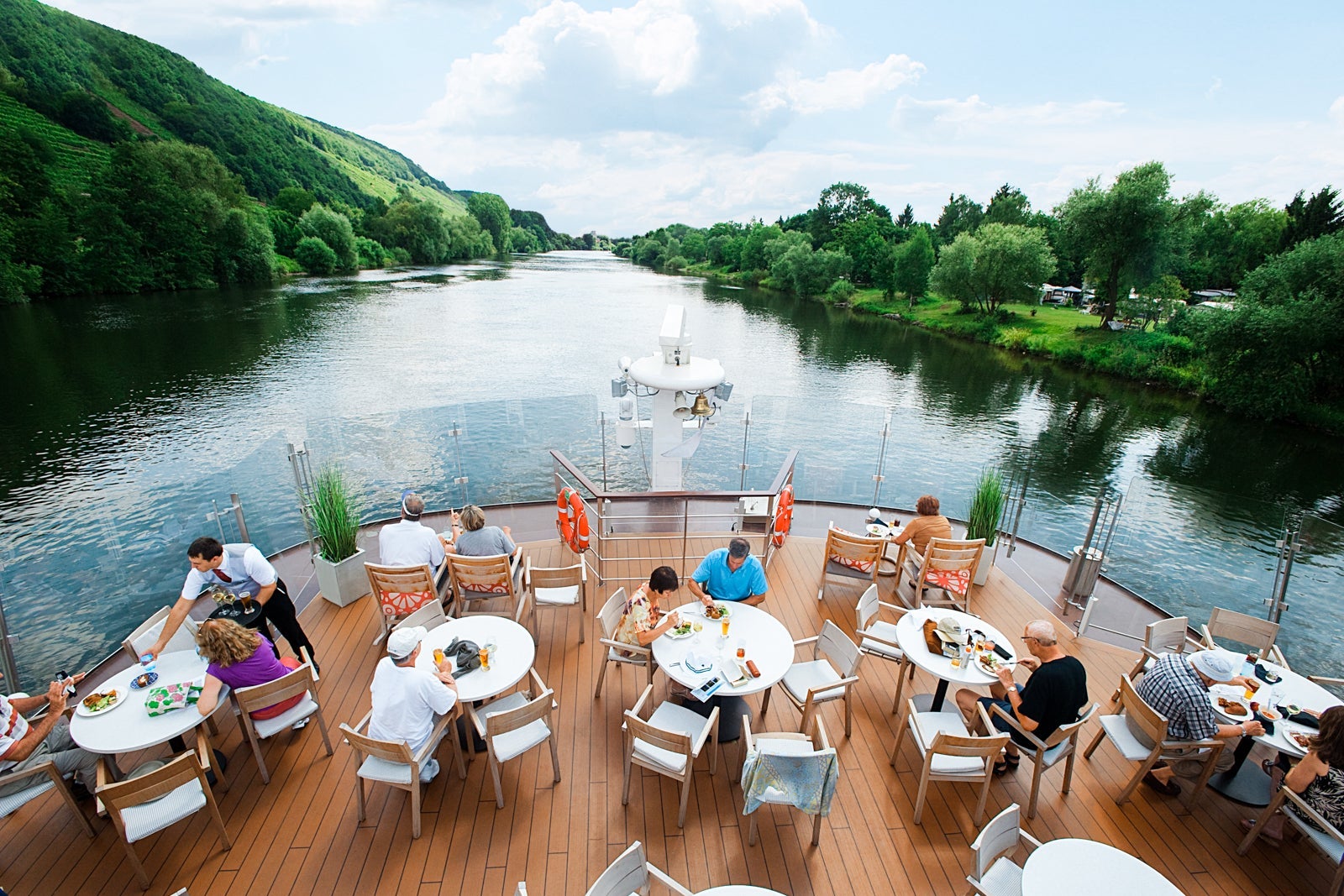
Compared to the expansive main dining rooms, dizzying arrays of specialty restaurants and massive buffets on large ocean vessels, river cruise dining experiences are more refined and low-key.
Most meals happen in the main restaurant, where there's usually table service (especially at dinner) and open seating. During breakfast and lunch, many ships offer a buffet as well as a la carte options.
River cruisers tend to be outgoing, so cruise lines often eschew tables for two or four in favor of larger convivial seating, especially in the main dining room. The ship's small size means you'll see many of the same people each day, so it's easy to make friends. However, this setup can be a tad daunting for introverts, friend groups wishing to dine alone and couples looking forward to a romantic dinner.
Related: Best river cruise lines around the world

Reward your inbox with the TPG Daily newsletter
Join over 700,000 readers for breaking news, in-depth guides and exclusive deals from TPG’s experts
By signing up, you will receive newsletters and promotional content and agree to our Terms of Use and acknowledge the data practices in our Privacy Policy. You may unsubscribe at any time.
Some lines offer options for lighter fare, like Viking's Aquavit Terrace, which is on the bow of the boat with 180-degree, floor-to-ceiling glass doors. Tauck ship passengers can eat at a relaxed, casual bistro called Arthur's, and those on some Uniworld vessels can enjoy Le Bistro, a charming Parisian cafe where windows can be lowered for an open-air vibe.
AmaWaterways, Viking and Uniworld provide vegan and vegetarian options upon request. Avalon includes vegetarian-friendly dishes on its menu, and the line can accommodate vegans with advance notice. Tauck's high-end, customized dining options mean that gourmet animal-free cuisine is always available, though notifying the kitchen ahead of time is appreciated.
Overall, dining options are limited on river cruises, in terms of both open hours and restaurant choices. Don't expect to hit up a midnight buffet or grab a late-afternoon pizza. During the day, the ship might set up a buffet for breakfast or lunch in the lounge or on the pool deck. If you feel like a snack, look for high tea, tapas or stations to grab cookies, granola bars or fruit.
For dinner, everyone typically heads to the same restaurant at the same time, though some ships offer alternative options — like a multicourse pairing or candlelit dinner on the deck — that are also included as part of the itinerary. For example, AmaWaterways' chef's table offers a tasting menu paired with wines. On warmer weather cruises, Avalon recently began offering dinner at Sky Grill, giving passengers the opportunity to soak in sunsets and open-air views from the top deck.
Dining also tends to have a local flair. Cruise line chefs often frequent farmers markets and local purveyors to procure ingredients for regional specialties, including wines produced in the regions the ship is visiting. Expect Hungarian goulash and glasses of crisp furmint or luscious tokaji in Budapest, Hungary; bratwurst, sauerkraut and hefeweizen in Passau, Germany; cheerful French rose all day in Provence, France; and bitterballen, mussels and Dutch pilsner in the Netherlands.
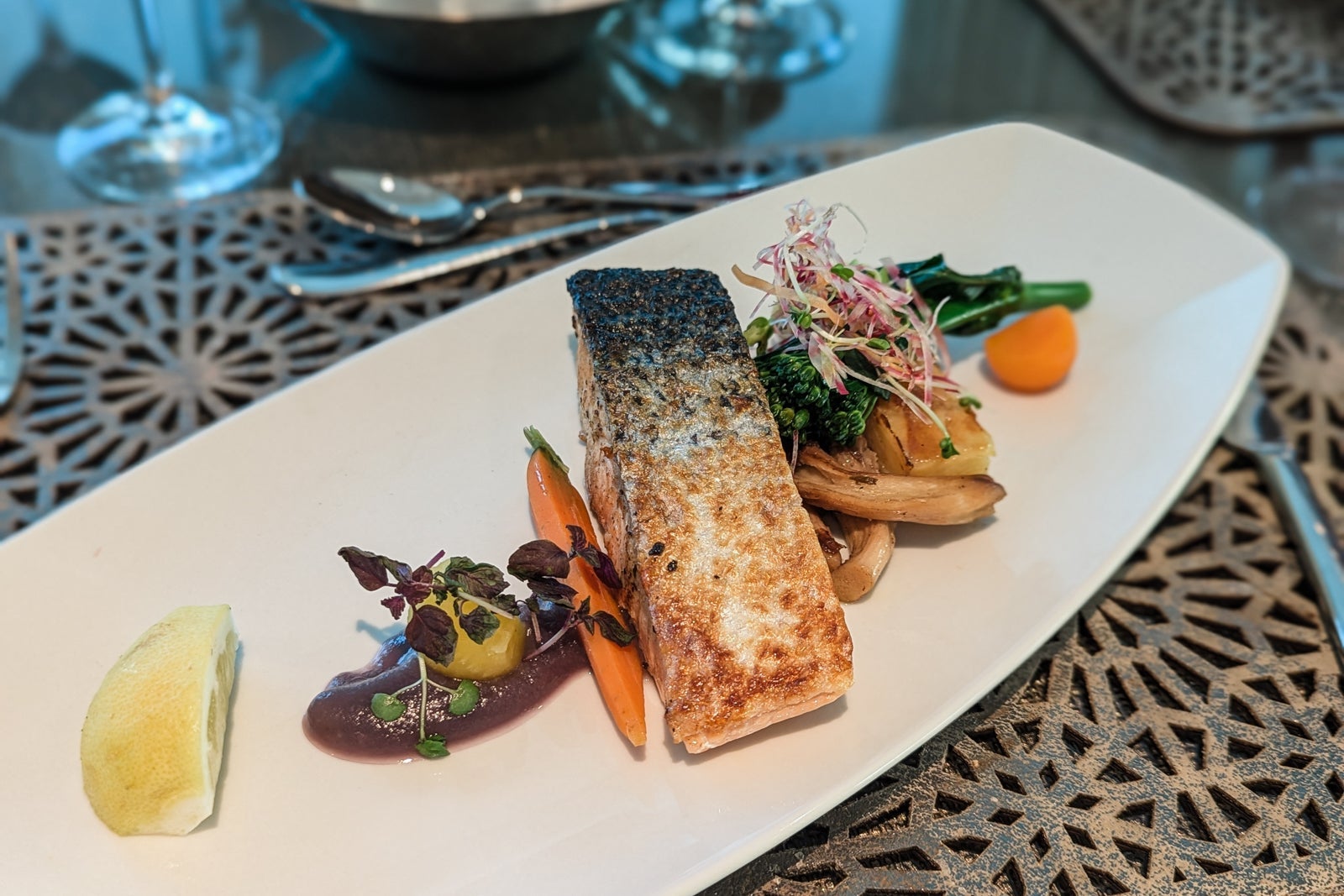
Guests can also make use of later stays in port to enjoy dining experiences on land. You can head out on your own or see if your cruise line offers an evening out. Each Tauck river cruise features an exclusive dinner ashore in a historic venue like a chateau or palace. For example, on the "Danube Kingdoms" itinerary, you can enjoy a meal in Vienna's Palais Pallavicini, which was constructed in 1784 and has hosted luminaries like Ludwig van Beethoven and Franz Schubert.
As far as beverages, many cruise lines — such as Viking, AmaWaterways and Avalon — include wine and beer with meals in their fares. More upscale brands like Uniworld and Tauck offer complimentary drinks all day long, with spirits and cocktails included. For 2026 sailings, Riviera Travel is upgrading its included superior drinks package with wine, beer, spirits and mixers available from 10 a.m. to midnight.
Some river cruises offer guests the option to pay to upgrade to a premium beverage package. Viking's Silver Spirits beverage package, for example, offers full access to the ship's open bar during its hours of operation for select premium wines and Champagne by the glass, as well as cocktails, aperitifs, upgraded whiskeys and soft drinks.
Confirm with your cruise line to be sure, but if you happen upon a cozy wine shop in Porto, Portugal, or visit a chateau in France's Loire Valley, you're welcome to bring bottles back on board to enjoy in your cabin; this is a welcome contrast from ocean cruise lines, which hold the alcohol you purchase ashore until the end of your trip. Lines may also offer daily happy hours like AmaWaterways' Sip and Sail cocktail hour, during which bartenders freely pour wines, beers and mixed drinks.
Excursions are filled with cultural and historical highlights
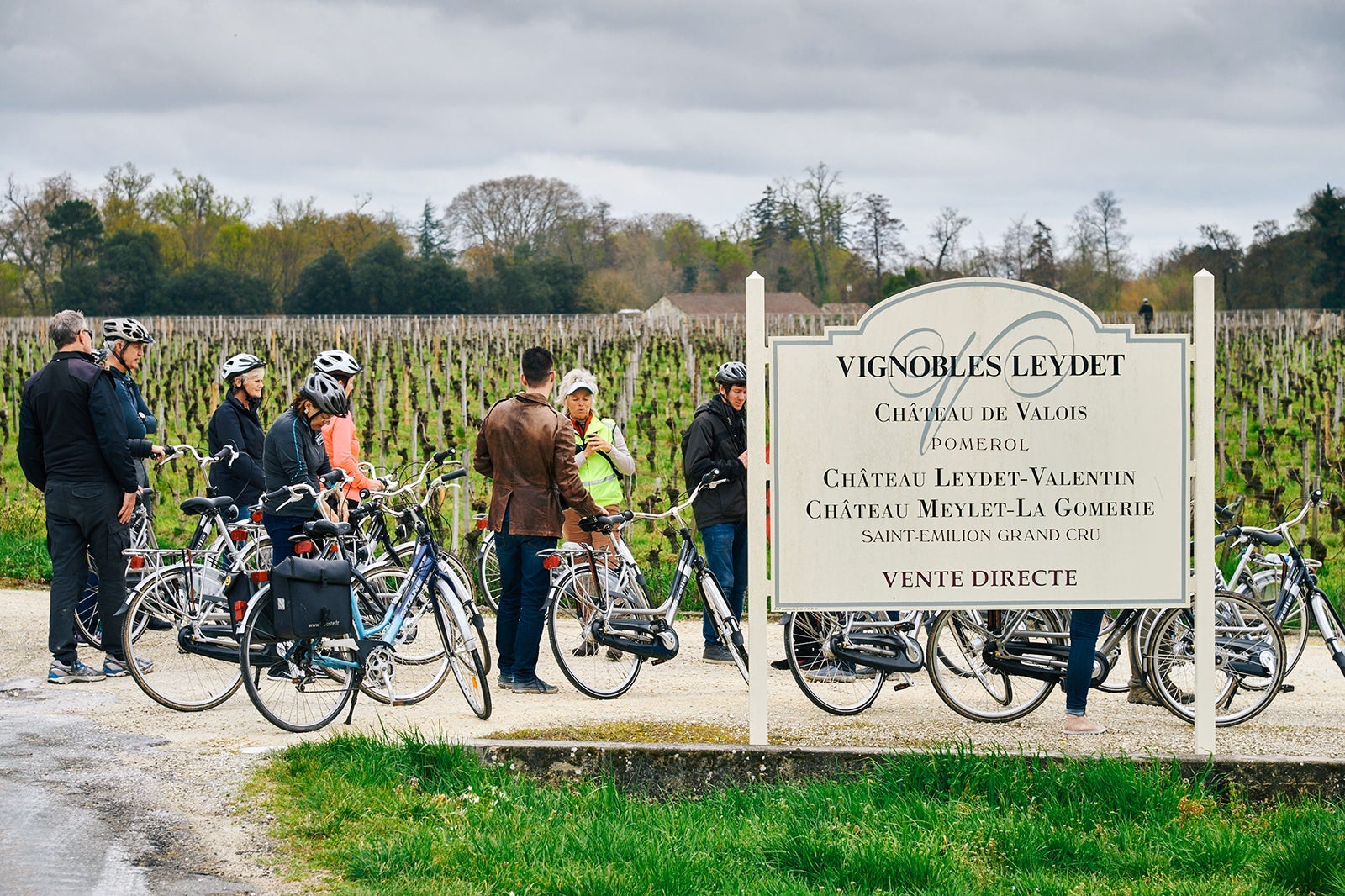
River cruises are big on immersing passengers in the culture, art and history of each locale. To that end, lines often offer passengers several options for excursions at each port, at least one of which is included; generally, this is a guided bus or walking tour.
Cruisers are divided into relatively intimate groups for tours. Cruise ships often provide headsets (with chargers in your cabins), so you won't miss a word of your guide's commentary.
Some cruise lines give you a larger selection of included excursions and offer more niche port activities that might incur an additional charge. Tours are rated by the activity level required by participants (easy, moderate or strenuous), so you can easily find one that suits you.
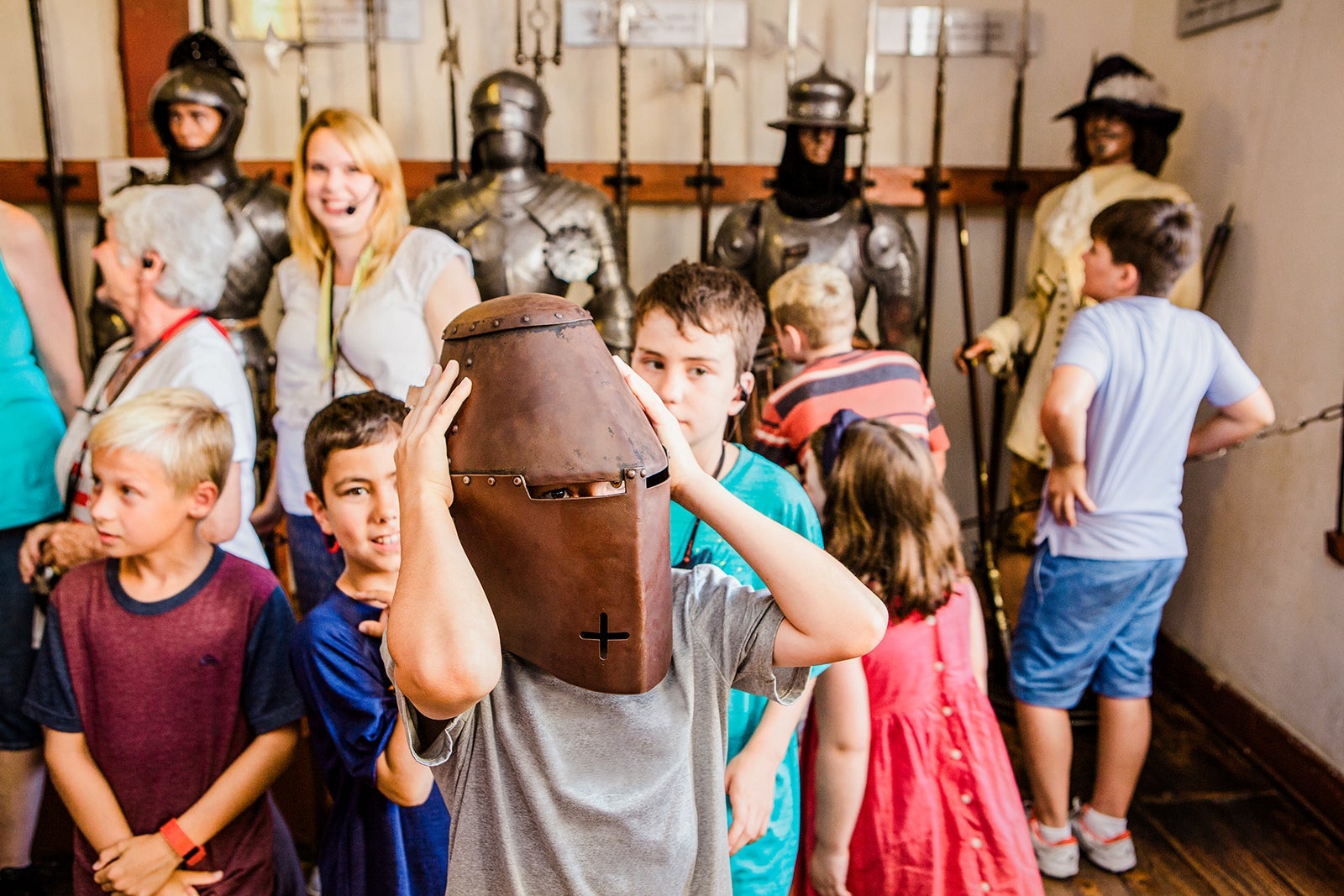
AmaWaterways, for example, offers a range of no-fee excursions, including hikes, bike rides and tasting tours. Optional excursions or special events — such as the Strauss and Mozart concert in Vienna or the Abu Simbel temples and Sofitel Legend Old Cataract Aswan excursions in Egypt — incur a small fee.
Uniworld river cruises include most onshore excursions, such as after-hours museum visits and outings that show how locals live. Other activities, like a side trip to the Black Forest or a chef's table cooking class, incur a fee. The majority of Uniworld's itineraries offer a Make Travel Matter onshore experience with a sustainability focus. One recently added experience is Rowing Venice, where a nonprofit that empowers female rowers (who are significantly underrepresented in the city) gives travelers a lesson on Venice, Italy's unique rowing style.
The same goes for Tauck, where a higher price tag for an all-inclusive sailing experience means that excursions are always part of the deal. Passengers can take a cogwheel ride to Switzerland's Mount Pilatus and Germany's Heidelberg Castle on the "Rhine Enchantment" itinerary; stroll around Claude Monet's garden in Giverny, France, during a VIP tour of Normandy and the Seine; or set out on a vineyard hike and baroque abbey visit in Austria's Wachau Valley aboard the "Amsterdam to Budapest" sailing.
Whatever activities you select, you will often have time afterward to explore the area on your own. If guided excursions aren't your thing, feel free to hit up the onboard concierge for ideas, plan your own outings or watch passersby from a table at a sidewalk cafe. Lines such as AmaWaterways and Scenic also offer complimentary bikes so you can cover more of the area than on foot.
If your ship is staying at port until late evening or overnight, you'll be able to take advantage of the local nightlife; you can sip cocktails at a ruin bar in Budapest's Jewish Quarter or listen to live jazz in a club in Amsterdam. Uniworld itineraries include Nights Out Excursions, which feature events like a light show projected on the walls of a World War II-era submarine base at Bassins des Lumieres on a "Brilliant Bordeaux" sailing or a tasting of one of Switzerland's best beers at Feldschlosschen during the "Remarkable Rhine and Historic Holland" itinerary.
Related: 9 best river cruises in Europe
River cruise passengers span generations ... sort of
The passenger demographic for river cruises skews older, and retired couples make up the majority of river cruise guests. This is due to several factors, not the least of which is that river cruises are more expensive vacations than many younger passengers can afford. These itineraries also take a slower pace and eschew a flurry of activities on board for a focus on relaxing, reading and interacting with other passengers.
That doesn't mean you won't find families or younger travelers on river cruises, though. Certain lines, such as Uniworld and Tauck, cater to multiple generations with special family-friendly sailings, like Uniworld's "Splendors of Egypt and the Nile" in its Generations Collection and Tauck's "Bonjour! France Family River Cruise" with activities that cater to different ages of travelers. AmaWaterways partners with Disney to offer family-focused cruises on select itineraries. (Note that on regular sailings, some lines, such as Viking, have an age minimum of 18.)
Related: Are European river cruises right for families? Here are the pros, cons and best options for kids
Avalon's extensive "Active & Discovery" itineraries, with up to 28 included excursions during the sailing, give it the youngest average age of any river cruise line. The line has livelier, more active passengers overall.
On river ships, you won't find water parks, kids clubs and gaming arcades that cater to the school-age, tween and teen sets. Families with kids booking a river cruise should know that board games, giant chess and possibly a plunge pool will make up the bulk of onboard entertainment. If those options, combined with time in port, are not enough to satisfy your crew, you might want to stick with ocean sailings.
Middle-aged passengers are often drawn in by themed itineraries like wine or music cruises, like Uniworld's "Music of the Danube" or Viking's "Rivers and Wine."
River ships don't offer as many onboard diversions as large ocean ships
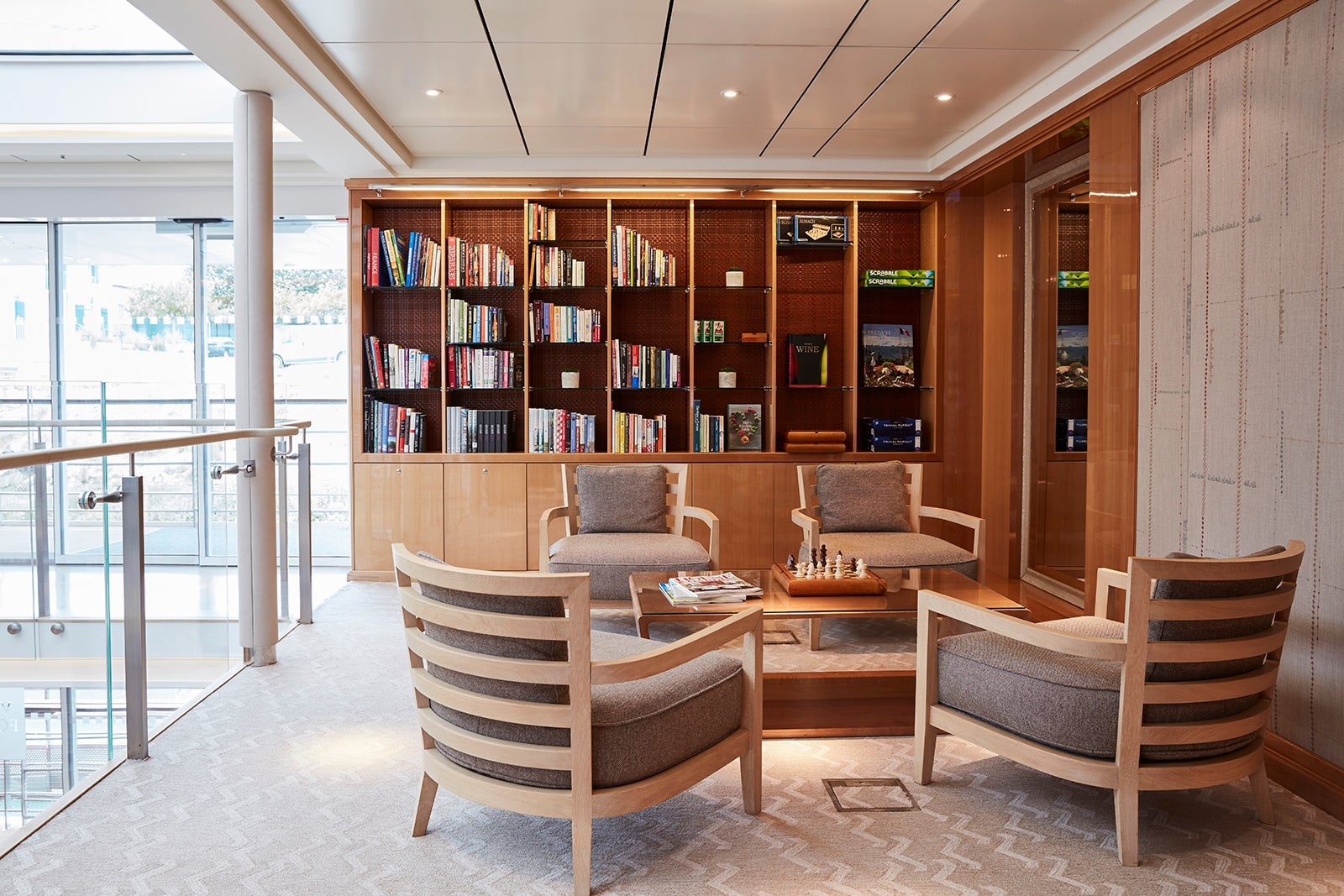
The streamlined size of river vessels allows them to deftly navigate shallow rivers, canals and locks, so they often dock in the heart of cosmopolitan cities and charming towns. But that accessibility comes with a trade-off: River ships don't have space for dozens of restaurants and bars, expansive spas and fitness centers, casinos or other splashy offerings that are ubiquitous on large ocean liners.
Onboard activities include port talks from the cruise director to preview what to expect at the next destination, postdinner trivia in the bar and sometimes music and dancing led by a keyboardist, small band or DJ.
River cruise ships usually have a library, a lounge (maybe with a dance floor) and a rooftop sundeck (sometimes with a pool or hot tub). Some have a small room dedicated to fitness, with equipment like an elliptical machine and a treadmill. Select ships offer more wellness amenities like yoga, meditation and boot camp classes on deck or in the lounge.
Related: River cruise packing list: What to pack when traveling by riverboat
AmaWaterways' AmaMagna ship is almost twice the width of traditional European river ships, meaning it has space to offer additional leisure amenities such as a cinema, a shopping boutique and the Zen Wellness Studio — an expansive space with a fitness center, massage rooms and a juice bar.
You'll get the chance to explore lesser-known locales
River cruise itineraries include beloved European destinations like Prague and Paris, as well as must-see Southeast Asia destinations like Ho Chi Minh City, Vietnam. However, they can also take you off the beaten path.
Rudesheim, for example, is a quaint German village along the Rhine notable for its crisp rieslings that travelers can sip at cute taverns and wine cellars. It's also known for a hyper-local drink called Rudesheim coffee that is flambeed in front of you with brandy and sugar cubes. The fairy-tale town has charm in spades, with narrow alleyways and half-timbered architecture, and you can experience it on many Rhine river cruises.
You can also discover Nijmegen, Netherlands, on itineraries that focus on the Netherlands and Belgium. The country's oldest city dates back more than 2,000 years and is the site of the Kröller-Müller Museum, where you can admire 97 works of art by Vincent van Gogh. Also, the town of Veere in the Netherlands has seaside charm and windmills but fewer crowds.
River cruises highlight destinations like these that might not be on travelers' radar but can become surprises.
Related: The best Christmas market river cruises
You can see destinations outside Europe
When many people think of a river cruise, they immediately associate it with the Danube, Rhine, Rhone or Douro. But there are a bevy of itineraries outside of Europe.
Viking and AmaWaterways cruise the Mekong between Vietnam, Cambodia and Laos, stopping at floating markets, fishing villages and legendary temples like Angkor Wat. (The former has recently added Viking Tonle, a sister ship to Viking Saigon.) Viking also cruises down the Yangtze in China, exploring the Three Gorges and cultural highlights at Chongqing, Yichang and Fengdu.
This year, two new ships will join Viking's Nile fleet to sail the popular "Pharaohs and Pyramids" itinerary in Egypt; it takes explorers to Queen Nefertari's tomb in the Valley of the Queens, Aswan's fragrant spice market and the temples of Luxor and Karnak.
Ports and docking times are subject to change due to traffic and water levels
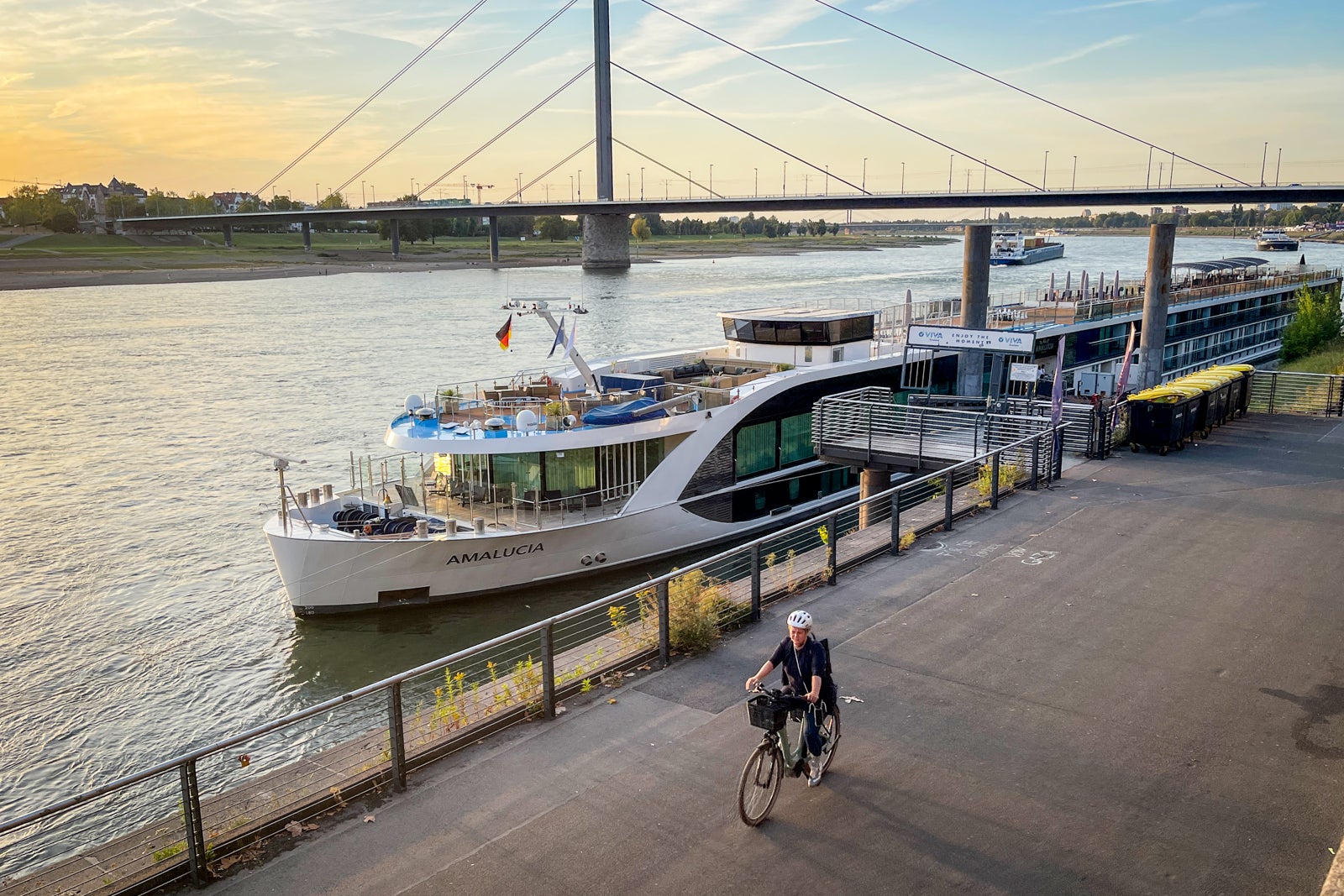
One thing river cruisers should keep in mind: Fluctuations in navigable waters and boat traffic during busy times can result in unintended changes to an itinerary.
During the past decade, historically low water levels in Europe made certain sections of rivers impassable, resulting in skipped port stops and itinerary changes. In these circumstances, some passengers have to pack up all their belongings and finish their trip by bus or bypass the low-water area on land and switch to a sister ship located in more navigable waters. (River cruise lines often run identical ships on opposite itineraries on the same river to be better positioned to handle these situations.)
Additionally, increased traffic on canal locks during busy times like the Christmas market season or springtime on the Seine can put a wrench in your plans. During these times, it's not uncommon for the locks to get backed up with other ships passing through. This could mean that you end up having a shorter time to explore at your next port before you have to embark and continue on your journey.
These logistical considerations shouldn't prevent you from considering a river cruise, but you need to accept that you might not experience your vacation's itinerary exactly as stated on a cruise line's website. Time in port might be cut short, or excursions might need to be adjusted or canceled. You might even end up on a bus tour.
The main takeaway is to remain flexible.
River cruises offer cabin choice — just not quite as much as ocean cruises
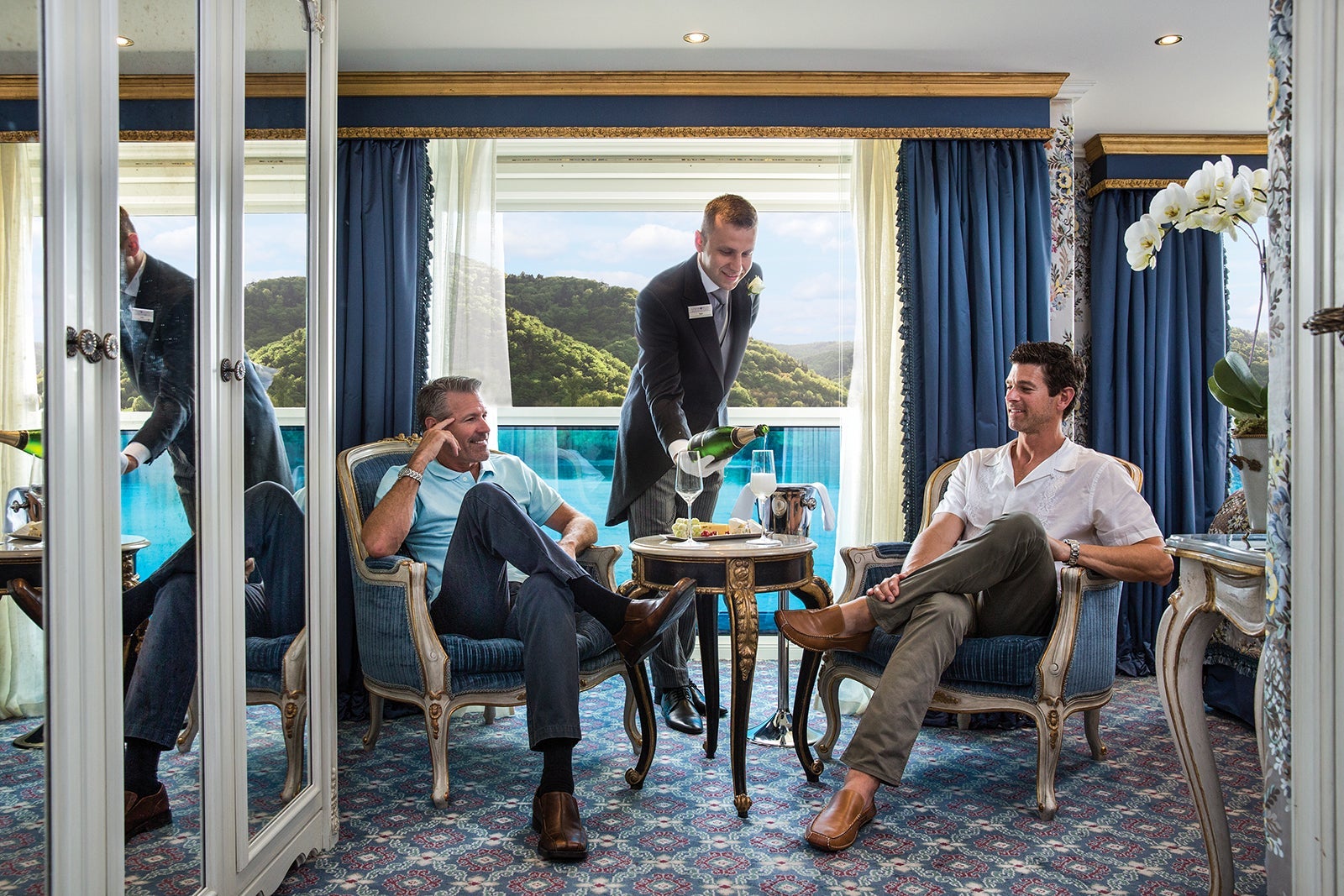
River cruises might take place on smaller vessels, but passengers still have a variety of cabin categories and price points to choose from.
You won't find inside cabins on a river cruise, so all rooms will have a view. Riverview cabins are the most affordable accommodations on board. They're on a ship's lowest passenger deck, close to the waterline, and they have a shallow, fixed window to let in light.
Next up are cabins with French balconies (sometimes referred to as Juliet balconies). These rooms have a glass door that opens to let in the fresh air. Outside, you'll find a safety railing but no private deck to stand or sit on.
Avalon's Panorama Suites feature French balconies with wall-to-wall, floor-to-ceiling glass doors that slide the entire length of the room. The beds face the view, turning your entire room into a balcony of sorts when the door is open.
Cabins with full balconies do have an outside sitting area with furniture, like those on Viking's Longships. More than a decade ago, AmaWaterways introduced cabins with twin balconies that are now offered on many of its ships. These combine a French balcony that juts out from the living area — perfect for when the weather is chilly or rainy but you still want to take in the views — with an actual balcony off the bedroom with patio seating. Viking's back-of-the-ship Explorer Suites also have twin balconies.
Tauck's unique loft-style cabins have split-level rooms with bedrooms on the lower level; a few steps up from that bedroom, you'll find a sitting area with windows that open. Some river cruise lines, like Scenic, feature "infinite balconies." Each cabin has a floor-to-ceiling window that opens halfway from the top with a push of a button (like a car window), bringing fresh air into your room.
What you won't find, however, are many adjoining rooms or those with beds for three or four guests in one room. Families and friend groups will have to partner up. However, some lines that offer family-friendly departures, like AmaWaterways, have built a few ships with cabins and suites that can sleep three or four or offer a few connecting rooms.
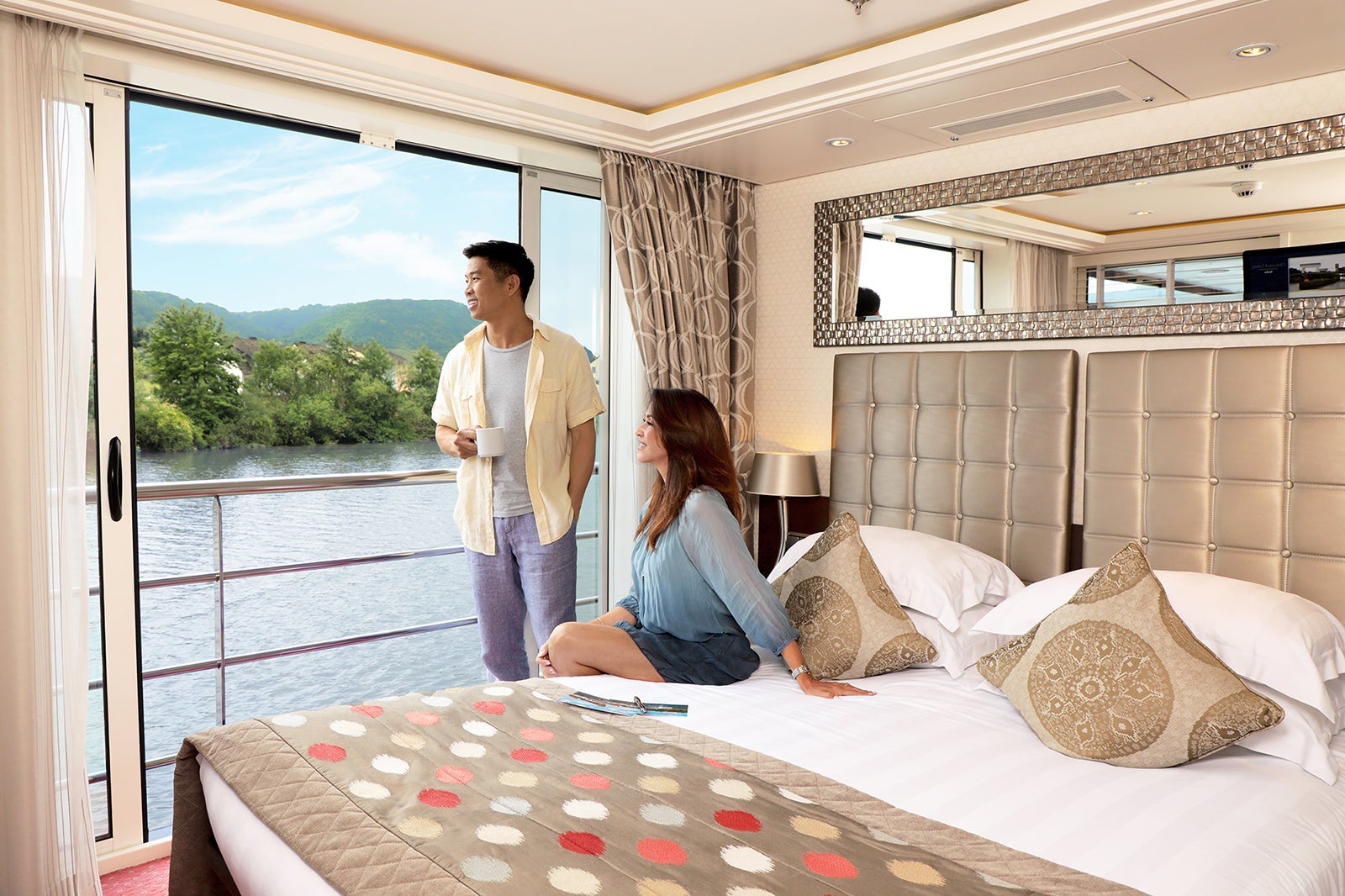
Uniworld's S.S. Elisabeth has some of the largest suites for a European river cruise, including two 506-square-foot Royal Suites. Guests who reserve the adjoining Standard Suite can create a 759-square-foot suite with two bedrooms connected by a separate living room.
Many river ships offer a selection of suites on board. Each of these features a living area that might or might not be a separate room. Every Viking Veranda suite, for example, has a full-size veranda off the living room and a separate bedroom with a French balcony; the line's 445-square-foot Explorer Suites also have wraparound verandas with 270-degree views.
More than half of the accommodations on AmaMagna, the flagship of AmaWaterways, are suites with separate sleeping and living spaces, full outside balconies and bathrooms with glass-walled showers. Uniworld's top suites include dedicated butler service, packing and unpacking assistance, and in-room breakfast.
Though it's nice to have a river cruise room with a balcony to get fresh air, you might find you have far fewer chances to use it than on an ocean cruise. River cruises travel to destinations where the climate varies during the seasons; if you're sailing down the Danube in early March, you're probably not going to want to sit outside on a balcony.
Also, ships sail mainly at night, so you have few daylight hours to sit outside and watch the riverbanks pass by. And in select ports, you might be docked up against another river ship, so your balcony looks straight into someone else's bedroom. You'll want to consider how much you'll actually use or enjoy a balcony when deciding on a cabin category; still, your cabin type might come with additional perks or amenities that make it worthwhile to book a room with a balcony.
Solo travelers are often accommodated
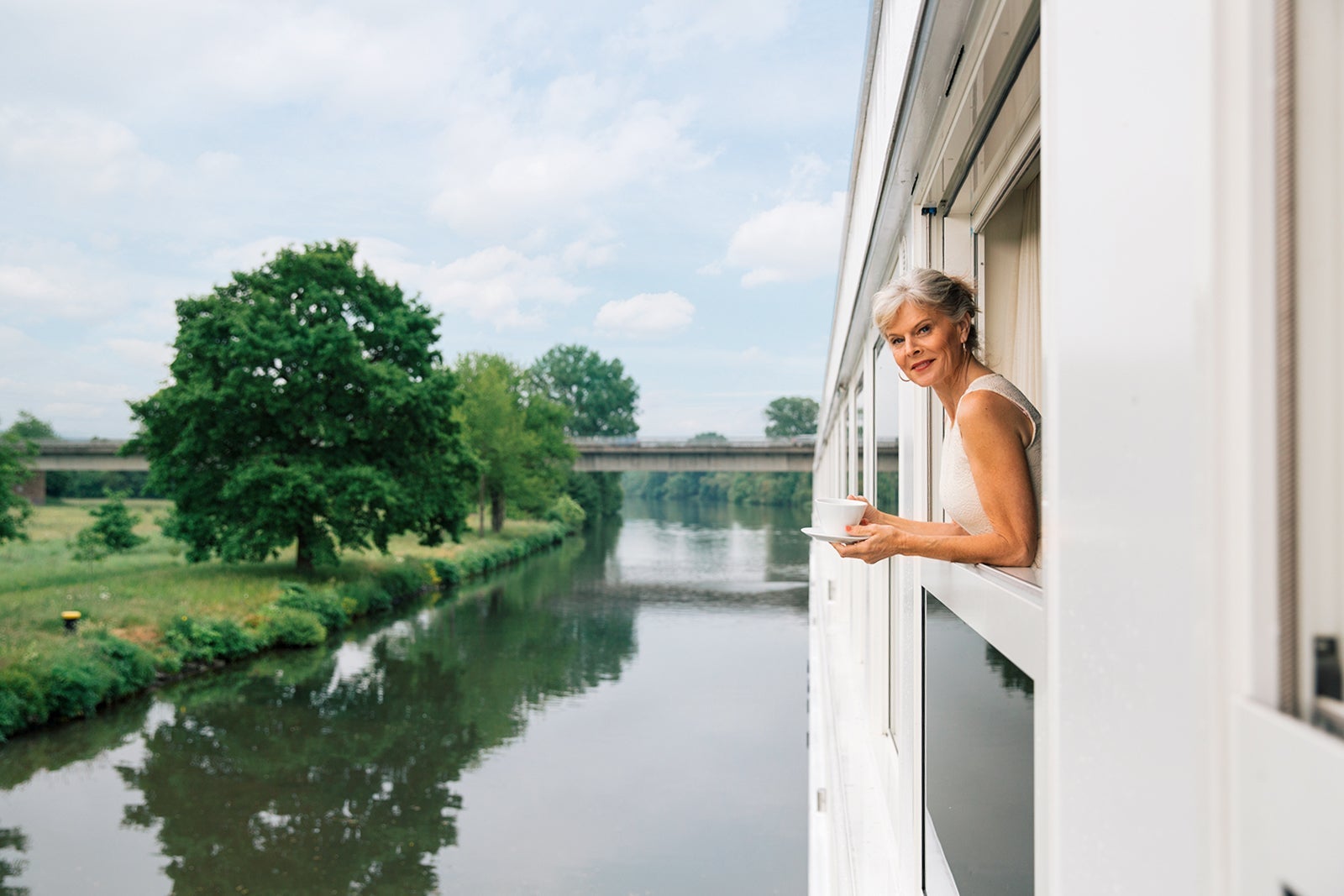
If you are traveling alone on a river cruise, you won't find too many cabins built for one person. However, many solo travelers do book river cruises, usually taking advantage of special discounts and itineraries for singles.
Uniworld waives the single supplement on select itineraries at different times throughout the year; the most up-to-date information is on its website. Tauck waives the single supplement for every Category 1 cabin, the smallest category at 150 square feet, for every departure. Female solo travelers may be interested to know that in August, Uniworld will embark on its first-ever, women-only voyage on the "Burgundy and Provence" itinerary, headlined by Saturday Night Live alum Rachel Dratch.
AmaWaterways frequently offers promotions for singles. Four of its European ships even have specially designed single-occupancy rooms with French balconies that are priced for solo occupancy with no supplement. Riviera Travel offers more than 30 cruise departures with no single supplement, which is the most extensive offering of any river cruise line. Viking is a bit less generous, with only the occasional solo traveler deal.
River cruises can be wonderful vacations for solo travelers. The intimate size of the ships makes it easy for cruisers to meet their shipmates. River cruises offer organic opportunities to socialize during evening happy hours, group dining and off-ship excursions. So, solos won't feel lonely.
Related: AmaWaterways vs. Viking: Which of these popular river cruise lines is right for you?
You'll need to book early, especially for popular departures
Booking early prevents disappointment and ensures you'll get your preferred cabin category, often at the lowest available price.
Two of the most popular river cruise itineraries are Rhine and Danube sailings, which take guests to several of Europe's Christmas markets in places like Vienna; Cologne, Germany; and Strasbourg, France. At the markets, visitors can stroll stalls of artisan-made ornaments, tuck into local sausages and stay warm with a mug of spicy mulled wine. The wildly popular Christmas market itineraries can sell out a year or two in advance, so it pays to plan ahead.
Related: 10 hot river cruises to book this year
Another sought-after itinerary is the spring "Tulip Time" route offered by AmaWaterways and other cruise lines. Passengers can see the famous flowers in full bloom in cities like Amsterdam and Rotterdam in the Netherlands and Ghent, Belgium. Because these sailings only take place in the spring, the limited departures can book up quickly.
River cruise lines encourage passengers to plan well ahead for itineraries like these with incentives such as early booking discounts. For example, on Tauck, you can reserve space on a particular itinerary with a refundable deposit and no obligation; once Tauck announces final details and pricing, you can either keep your booking and deposit in place or receive a full refund.
Bottom line
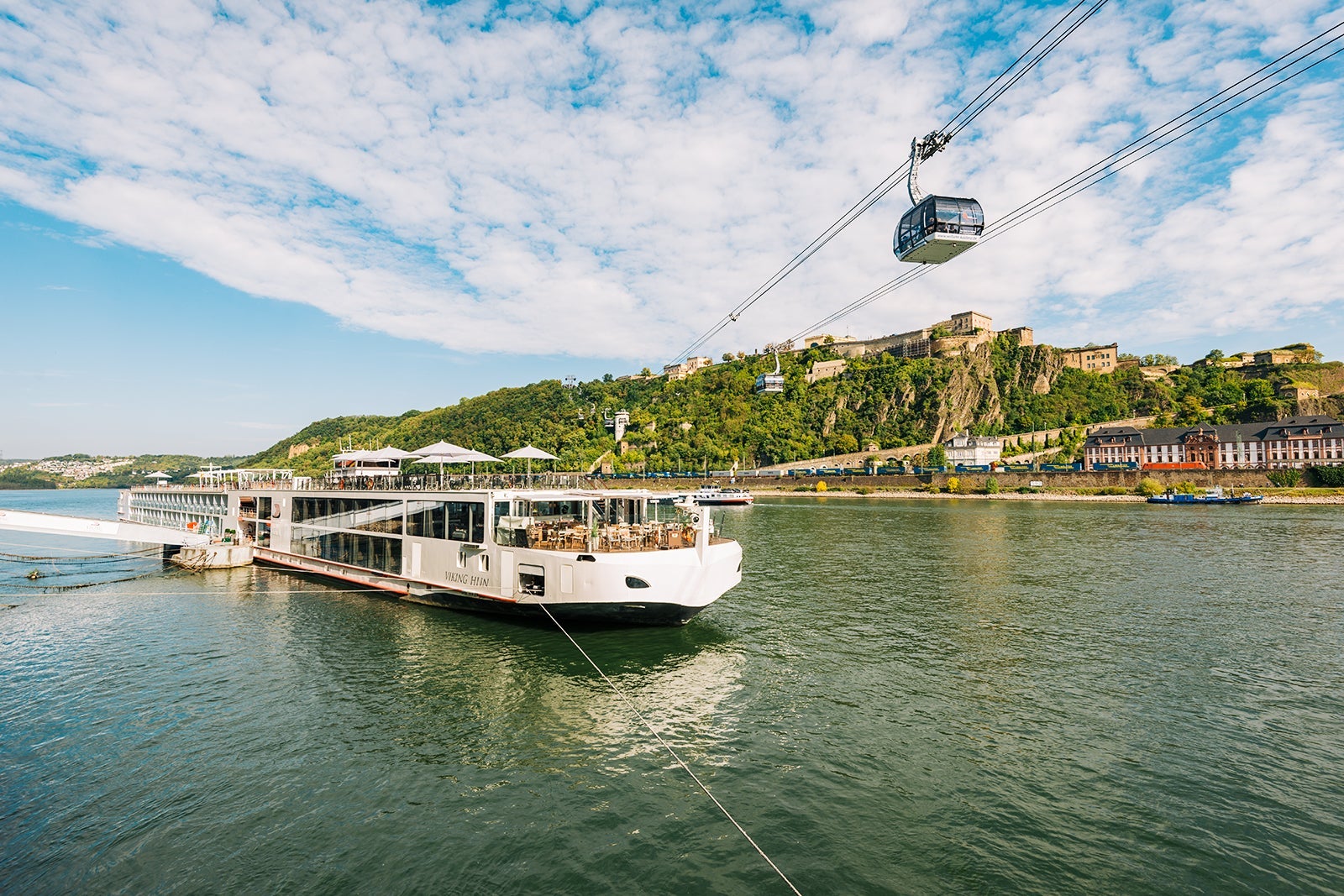
If you're seeking a vacation on the water with an intimate, uncrowded atmosphere and a focus on cultural immersion — and you are willing to forgo the attractions and activities found on large ocean vessels — then a river cruise might be right for you.
River cruise itineraries take you to both charming towns and vibrant cities, with vistas of scenic countryside, vineyards and historical landmarks along the journey. In between port stops, you'll have ample opportunities for relaxing on board and getting to know your fellow cruisers during social happy hours and communal dining.
Whether you're a solo cruiser, a couple or a friend group, you might want to consider a river cruise for your next vacation on the water.
Planning a cruise? Start with these stories:
- The 5 most desirable cabin locations on any cruise ship
- A beginners guide to picking a cruise line
- The 8 worst cabin locations on any cruise ship
- The ultimate guide to what to pack for a cruise
- A quick guide to the most popular cruise lines
- 21 tips and tricks that will make your cruise go smoothly
- Top ways cruisers waste money
- The ultimate guide to choosing a cruise ship cabin






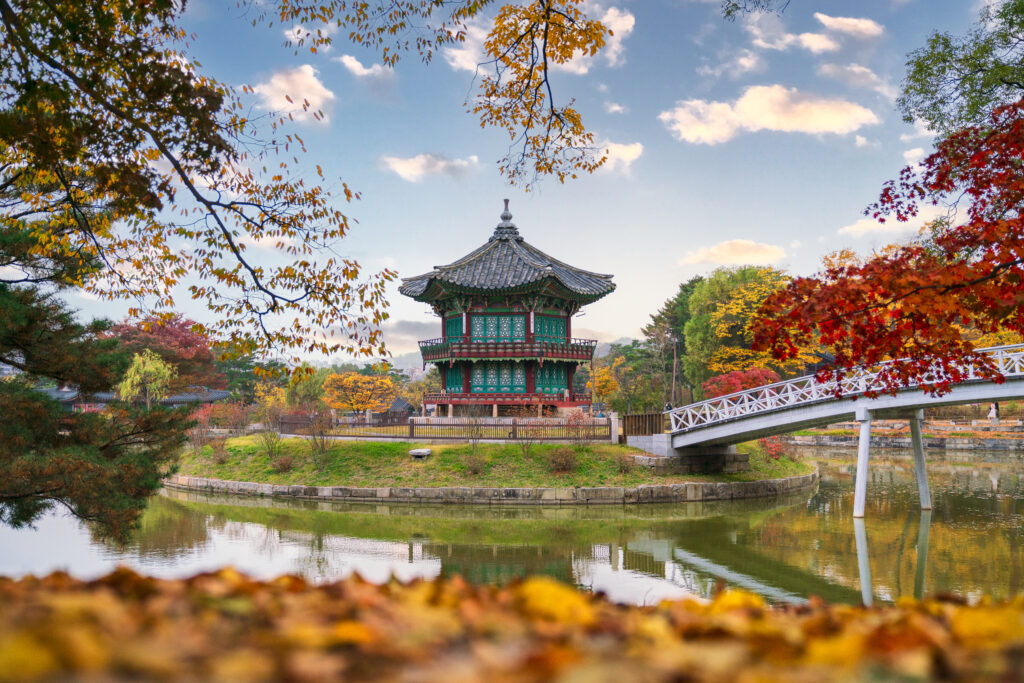
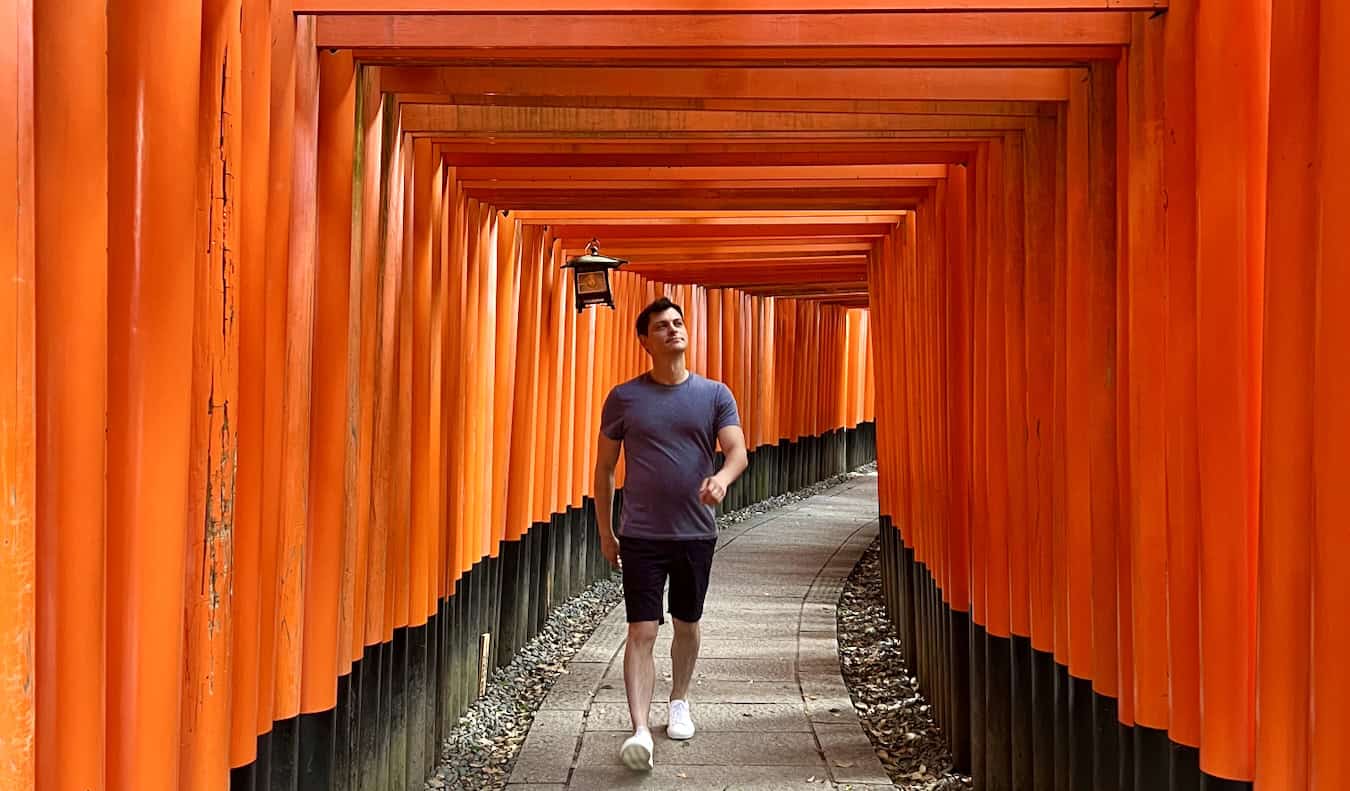


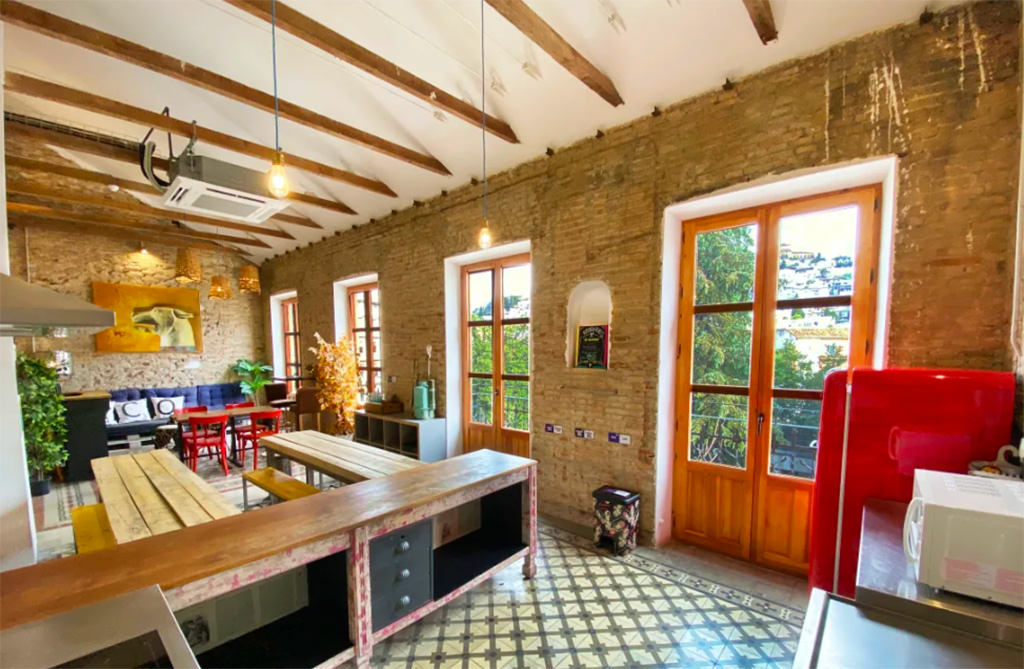
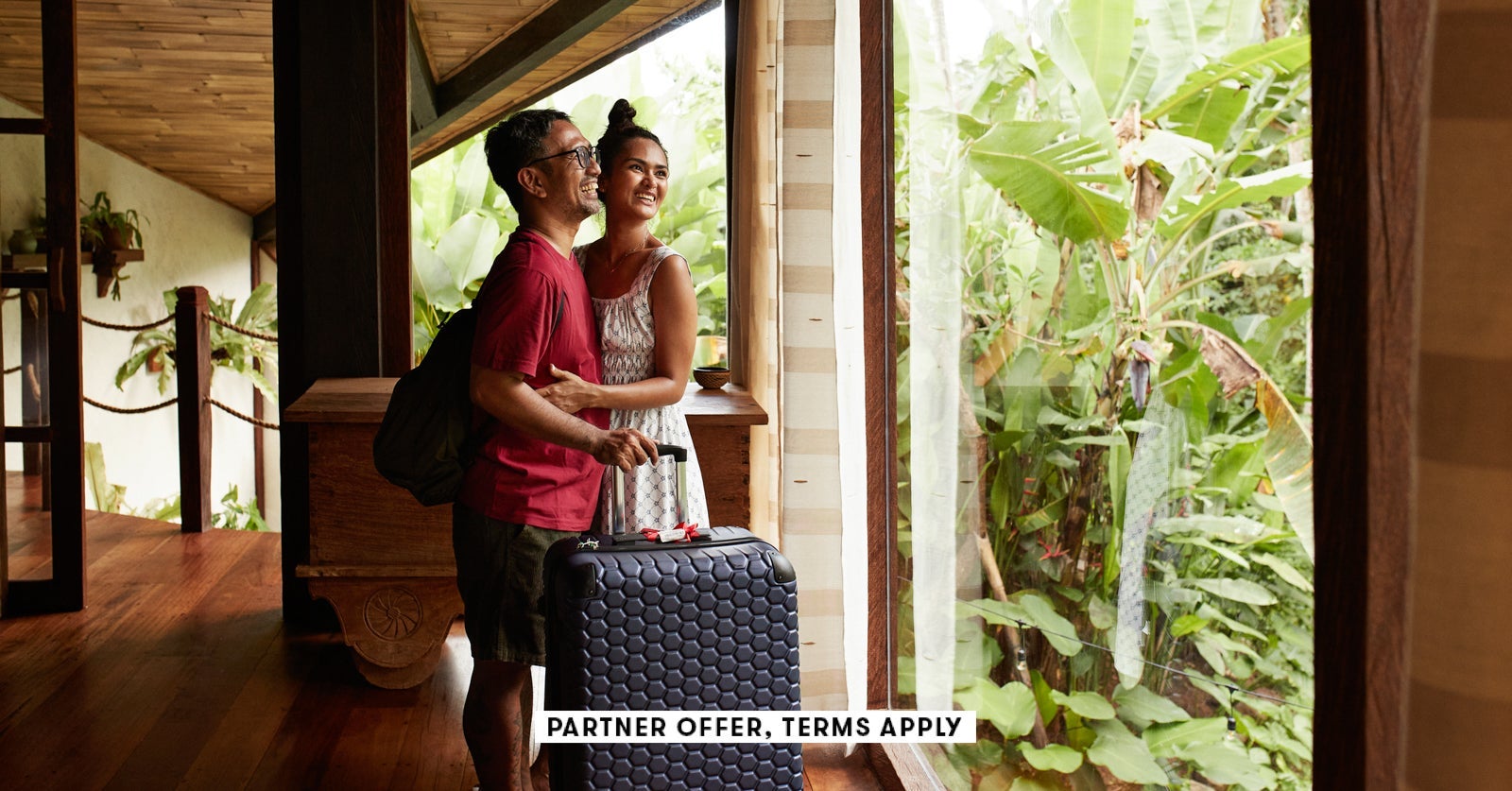
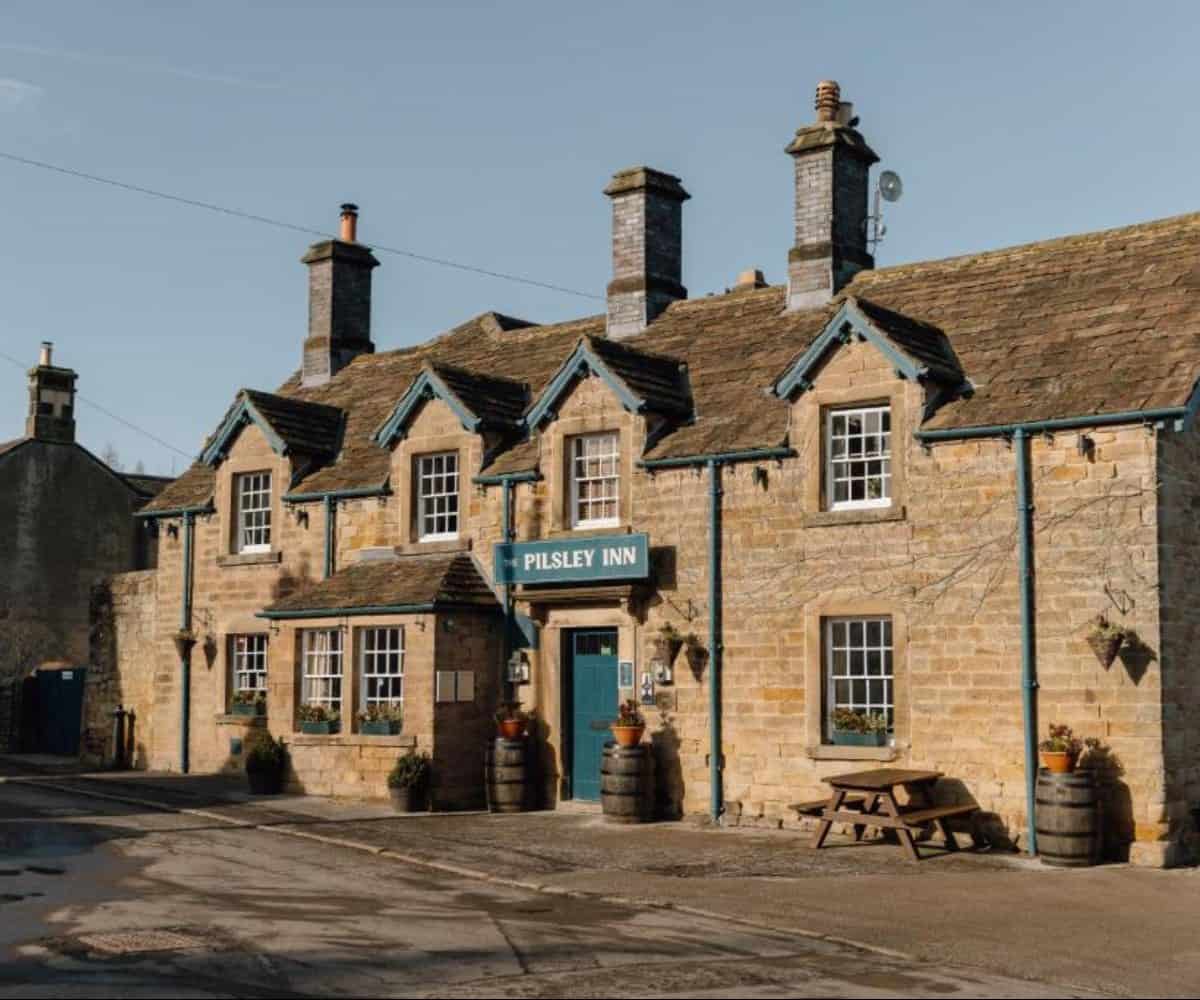
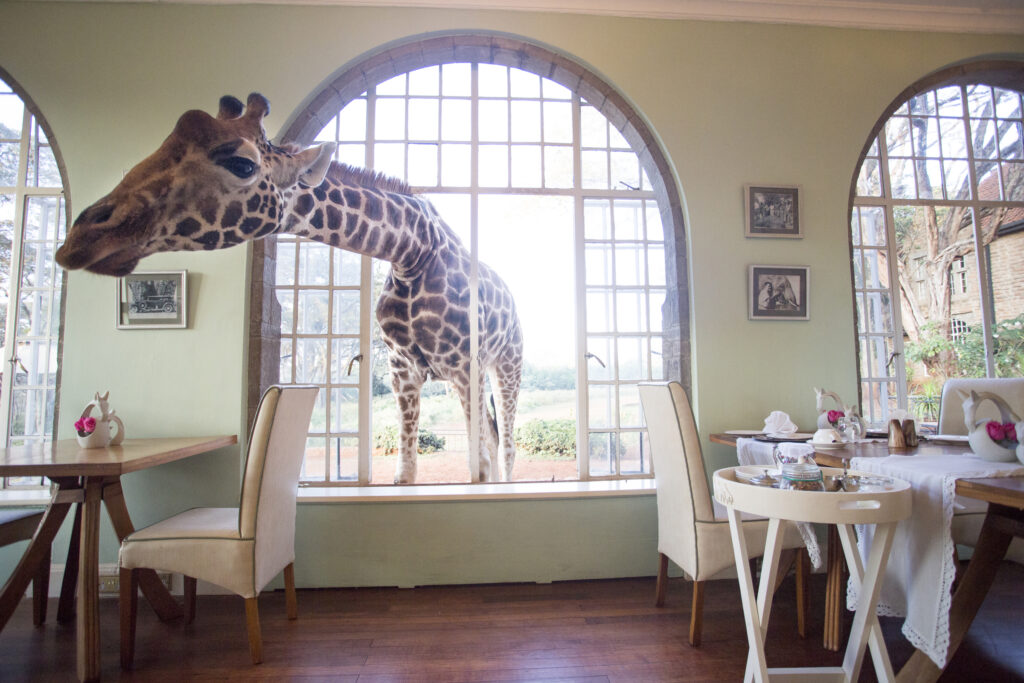
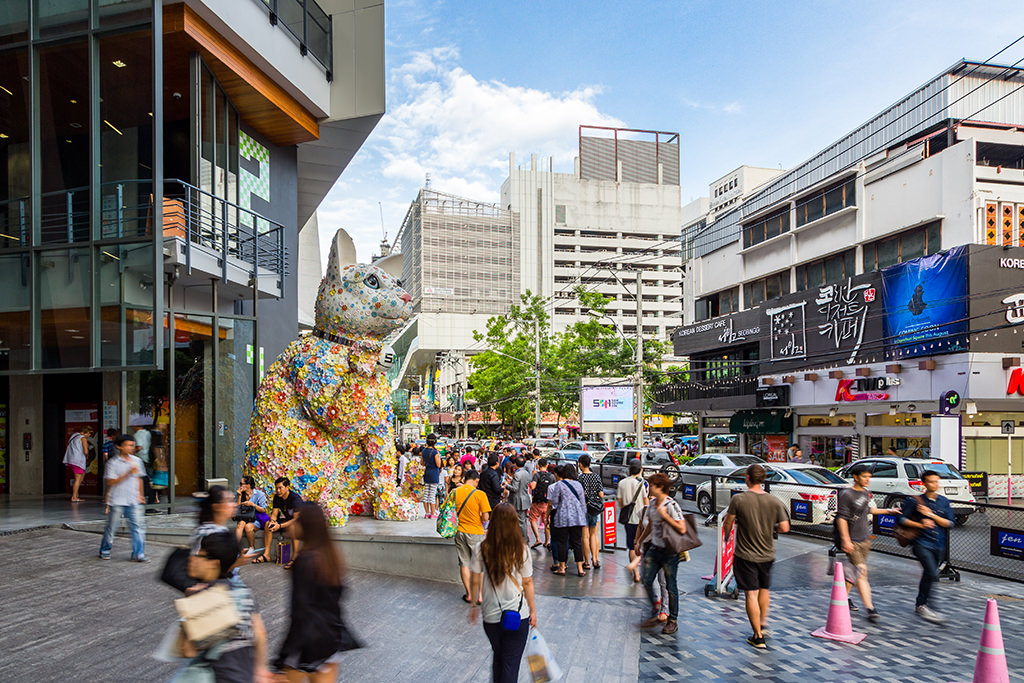
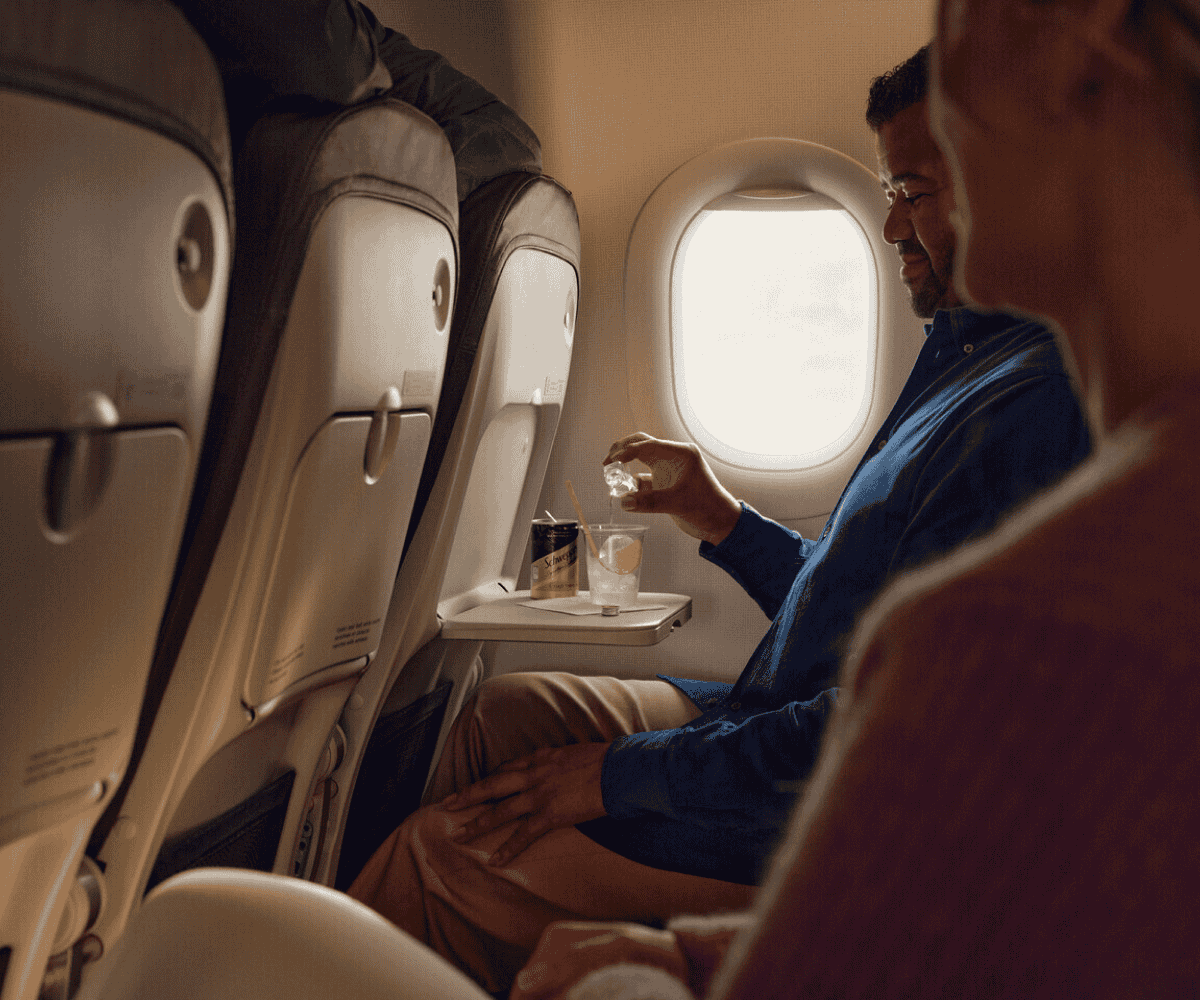

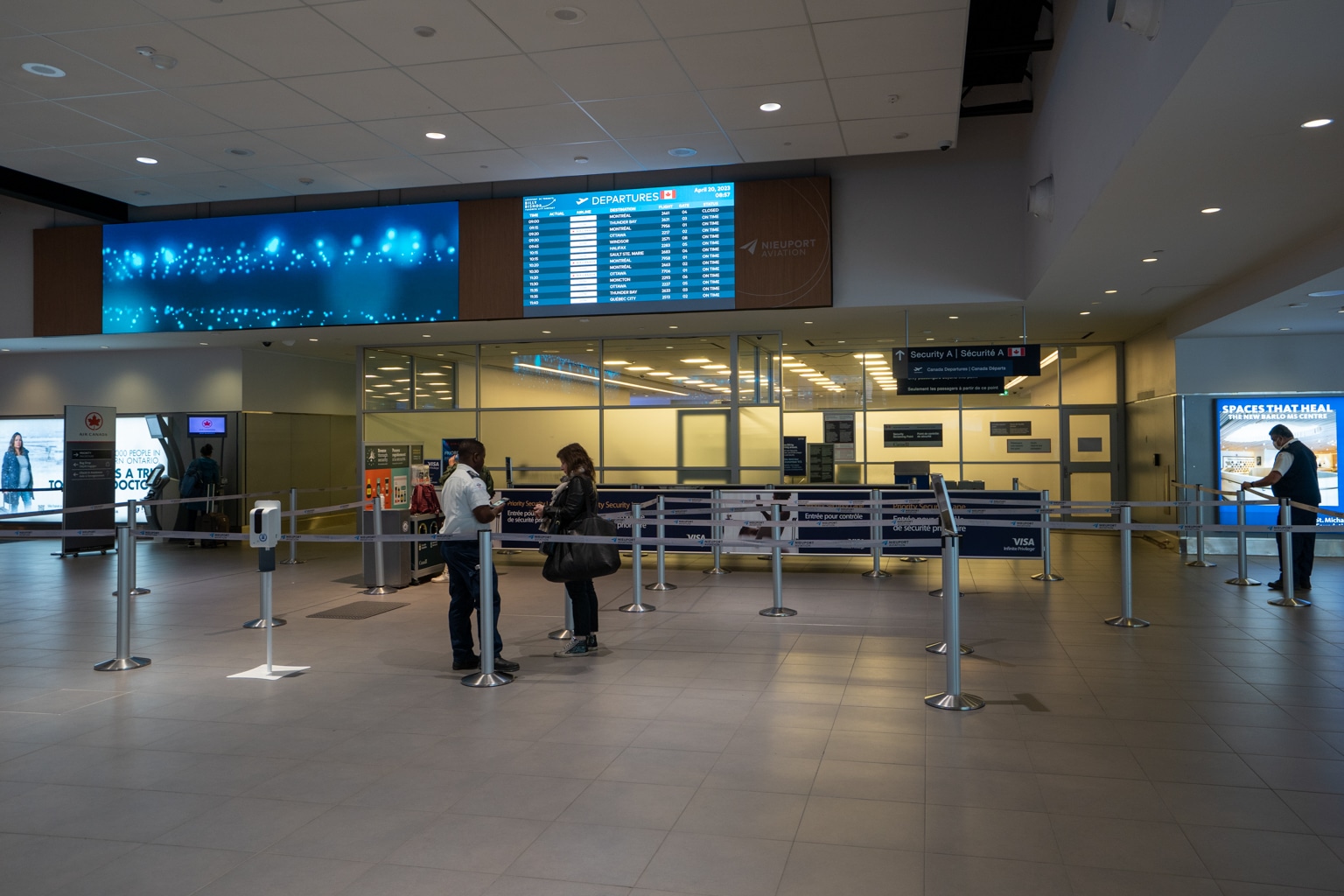
 English (US) ·
English (US) ·